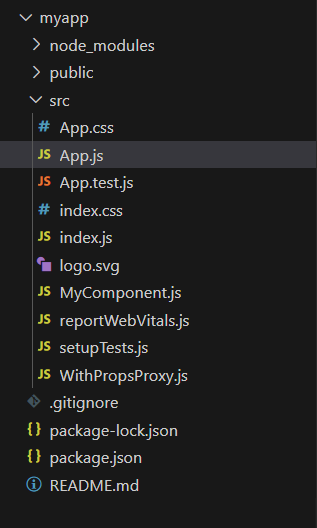
|
|
We will delve into the process of creating a props proxy for higher-order components (HOCs). This approach enables the addition of props to wrapped components before rendering, proving useful in various scenarios such as logging, modifying data passed to components, and managing authentication in diverse applications. Prerequisites:Approach:
Steps to Create the React Application:Step 1: Create a React application using the following command. npx create-react-app foldername
Step 2: After creating your project folder i.e. foldername, move to it using the following command. cd foldername
Project Structure: Project Structure The updated dependencies in package.json file will look like: "dependencies": {
"react": "^18.2.0",
"react-dom": "^18.2.0",
"react-scripts": "5.0.1",
"web-vitals": "^2.1.4",
}
Example: Creating a component so that we can pass it to another function component and you will get to now that how props proxy works in HOC components. Javascript
Javascript
Javascript
Steps to Run the application: npm start
Output:  Output |
Reffered: https://www.geeksforgeeks.org
| ReactJS |
Type: | Geek |
Category: | Coding |
Sub Category: | Tutorial |
Uploaded by: | Admin |
Views: | 12 |